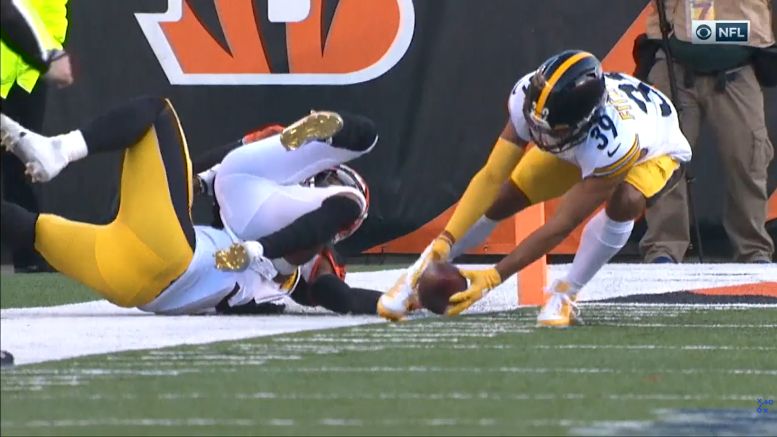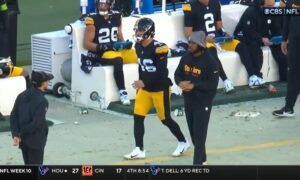One of the core realities about the game of football is that producing defensive splash plays does have a lot to do with ‘luck’. You can do a lot to put your team in position to pick off passes and to force and recover fumbles, but ultimately things out of your control—like offensive performance and the geometric reality of the football itself—play a key role in determining what happens in terms of takeaways.
Teams like the Pittsburgh Steelers, who had a high volume of takeaways, should be wary of this, but not as much in the way that you might think, according to Pro Football Focus. Based on their analysis, the rate at which they intercepted passes last season looks to be reasonably sustainable—that is, they were not overly lucky in this regard.
The rate at which they successfully recovered fumbles, however, is highly unlikely to be duplicated. The defense (and special teams) as a whole produced 22 forced fumbles. They recovered 18 of them, with T.J. Watt and Devin Bush each recovering four on their own, Bud Dupree also managing two along with Minkah Fitzpatrick.
According to Pro Football Focus, the Steelers’ net fumble recoveries from last season based on what is the normal ratio of fumbles forced to recovered was plus-12. There were only four other teams who were even plus-8, and only the New Orleans Saints joined them with a double-digit positive mark.
What this means is that Pittsburgh recovered roughly 12 more fumbles than the average rate would predict. Now, there are teams who are capable of being better than the average rate at recovering fumbles forced, based on practice habits, awareness, and athleticism, and perhaps the Steelers can be on this mark, but the high differential between the expected and actual outcomes in fumble recoveries indicates this isn’t likely to be duplicated.
It’s also unlikely that they continue to force as many fumbles as they did last season. They only forced 13 fumbles in 2018, 12 the year before, 17 before that, then 16, 13, 16, 15, 12, and finally, 24, going all the way back to 2010, the last time they had a defense to rival 2019’s.
In 2018, the Steelers actually way underperformed with respect to expected interception rate, because the defense was responsible for dropping a lot of should-be interceptions. Last year, with 20, they picked off just about the number they should have.
After leading the NFL with 38 total takeaways last year, it’s unlikely that Pittsburgh will sustain that for two years in a row—then again, they have led the NFL in sacks for three consecutive years, and I’m not sure that’s ever been done before, so who’s to say? Maybe this unit really has that magic touch.








